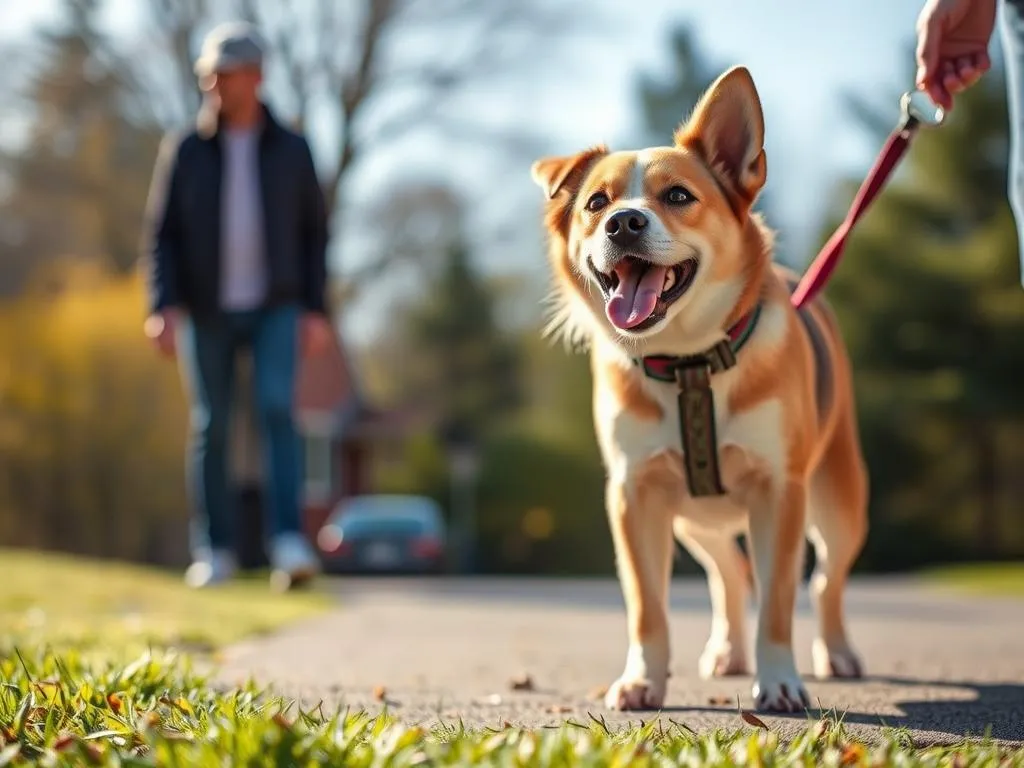
Leash manners can be a frustrating topic for many dog owners. Picture this: you’re out for a pleasant walk, and your dog suddenly lunges at another dog, pulling you off balance. Or perhaps your furry friend decides that every squirrel is worth a sprint, dragging you along for the ride. According to studies, nearly 50% of dog owners report experiencing issues with their dogs while on a leash. Understanding how to help a dog with leash manners is essential for both safety and enjoyment during walks.
Good leash manners are not just about preventing chaos; they’re crucial for your safety, your dog’s safety, and fostering positive socialization experiences. When your dog can walk calmly on a leash, it enhances your bonding time and allows both of you to enjoy the outdoors without stress. This article will provide you with effective tips, strategies, and common pitfalls to avoid while training your dog for better leash manners.
Understanding Leash Manners
What Are Leash Manners?
Leash manners refer to the behaviors exhibited by a dog while on a leash. Proper leash manners include walking calmly beside you, not pulling, lunging, or weaving. Conversely, poor leash behavior can lead to frustrating walks and potential safety hazards. For instance, a dog that pulls can inadvertently cause its owner to trip or fall, while one that lunges can create panic during encounters with other dogs or pedestrians.
Why Dogs Misbehave on Leash
There are several reasons why dogs might struggle with leash manners. Dogs are naturally curious and excited creatures. When they see another animal or a person, their instincts can kick in, prompting them to pull or lunge toward the distraction. Fear can also play a significant role, especially for timid dogs who may feel threatened by unfamiliar environments or situations. Additionally, a lack of training or understanding of expectations can lead to chaotic behavior on the leash.
Breed characteristics can also impact leash behavior. Some breeds, particularly working or high-energy dogs, may require more exercise and stimulation, making them more prone to leash pulling. Age is another factor; puppies might not yet have the self-control needed for good leash manners, while older dogs may have ingrained habits that need to be retrained.
Preparing for Training
Essential Gear for Training
Before you begin training your dog on leash manners, it’s important to have the right equipment. The type of leash and collar you use can significantly affect your training experience. Here are some options:
- Standard Leash: A 6-foot leash is ideal for most situations, providing enough length for freedom while maintaining control.
- Harness: For dogs prone to pulling, a harness can distribute pressure more evenly across the body and reduce strain on the neck.
- Head Halter: This can be useful for strong pullers, as it gives you more control without harming the dog.
Choosing the right equipment based on your dog’s size and behavior is essential for effective training.
Setting the Right Environment
The environment plays a significant role in the training process. For initial training sessions, consider starting in a quiet, distraction-free area like your backyard or a park during off-peak hours. As your dog becomes more comfortable, you can gradually introduce them to busier environments. Early morning or late afternoon walks can also be beneficial, as these times often have less foot and vehicle traffic.
Training Techniques for Leash Manners
Basic Commands to Master
Before diving into leash manners, ensure your dog is familiar with basic commands, as these will help during training.
- Sit: Teaching your dog to sit can help you manage their excitement during walks, especially when encountering distractions.
- Stay: The stay command is crucial for keeping your dog in place while you prepare to walk or when you need them to pause for any reason.
- Come: A reliable recall command can prevent pulling when your dog sees something interesting and wants to sprint away.
Step-by-Step Training Process
Desensitization to Distractions
A significant part of training involves gradually exposing your dog to distractions. Start by walking in a quiet area and slowly introduce distractions like other dogs or people. Reward your dog for maintaining focus on you rather than the distractions.
Positive Reinforcement
Using treats and praise is a powerful way to encourage good behavior. When your dog walks beside you without pulling, reward them with a treat or enthusiastic praise. Over time, they will associate walking calmly on a leash with positive experiences.
Loose-Leash Walking
Teaching your dog to walk without pulling can be accomplished through various techniques:
-
Stop-and-Go Method: When your dog starts to pull, stop walking. Wait until they return to your side, then continue walking. This method teaches them that pulling leads to a halt in their fun.
-
Turn-Around Method: If your dog pulls, immediately turn around and walk in the opposite direction. This technique encourages your dog to pay attention to your movements and reinforces the idea that staying close to you is rewarding.
Dealing with Common Issues
Pulling
Correcting pulling behavior requires consistency. If your dog pulls, use the stop-and-go method or the turn-around method to teach them that pulling will not get them where they want to go. Additionally, consider using a front-clip harness for more control over their movements.
Barking at Other Dogs or People
Managing barking during walks can be challenging. If your dog begins to bark, calmly redirect their attention back to you using treats or commands. Make sure to reward them for ignoring the distraction.
Fearful Reactions
If your dog reacts fearfully to certain stimuli, take gradual steps to help them feel more at ease. Allow them to observe from a distance before gradually decreasing that distance as they become more comfortable. Providing treats during these encounters can help create a positive association.
Consistency and Patience in Training
The Importance of Regular Practice
For effective training, regular practice is essential. Aim for short, frequent training sessions of about 5 to 10 minutes throughout the day rather than long, overwhelming sessions. Incorporate leash manners into your daily walks to reinforce what your dog has learned.
Tracking Progress
Keeping track of your dog’s progress can help both of you stay motivated. Consider maintaining a journal or recording videos of your training sessions. This documentation will allow you to celebrate small victories and recognize areas for improvement.
Common Mistakes to Avoid
Mistakes Owners Make
Many owners unknowingly hinder their dog’s training efforts. Overcorrecting or punishing your dog can lead to confusion and fear rather than learning. Additionally, inconsistency in commands and expectations can confuse your dog, making it harder for them to understand what you want. Neglecting socialization can also impede your dog’s ability to handle distractions during walks.
How to Correct These Mistakes
Maintaining a positive training environment is crucial. Focus on rewarding good behavior rather than punishing mistakes. If you notice a lack of improvement, consider adjusting your techniques based on your dog’s responses. Patience is key; every dog learns at their own pace.
Conclusion
Mastering good leash manners is a journey that requires time, effort, and patience. By understanding the importance of leash manners and implementing effective training techniques, you can ensure enjoyable and safe walks for both you and your dog. Remember to celebrate small victories along the way and maintain a positive attitude during training. With dedication and consistency, your dog will learn to walk calmly by your side, enhancing your outdoor experiences together.
FAQs About Dog Leash Manners
What should I do if my dog won’t stop pulling?
If your dog consistently pulls, consider using the stop-and-go or turn-around methods. Additionally, using a no-pull harness can help manage their behavior.
Is it ever too late to train an older dog?
It’s never too late to train a dog, regardless of age. Older dogs may require more patience, but with consistent training, they can learn new behaviors.
How can I help my dog get used to walking with other dogs?
Begin by introducing your dog to other dogs at a distance where they feel comfortable. Gradually decrease the distance as your dog becomes more confident, rewarding them for calm behavior.









